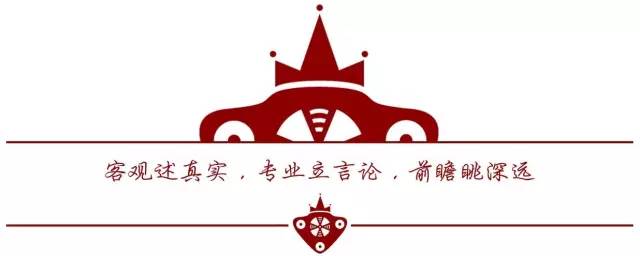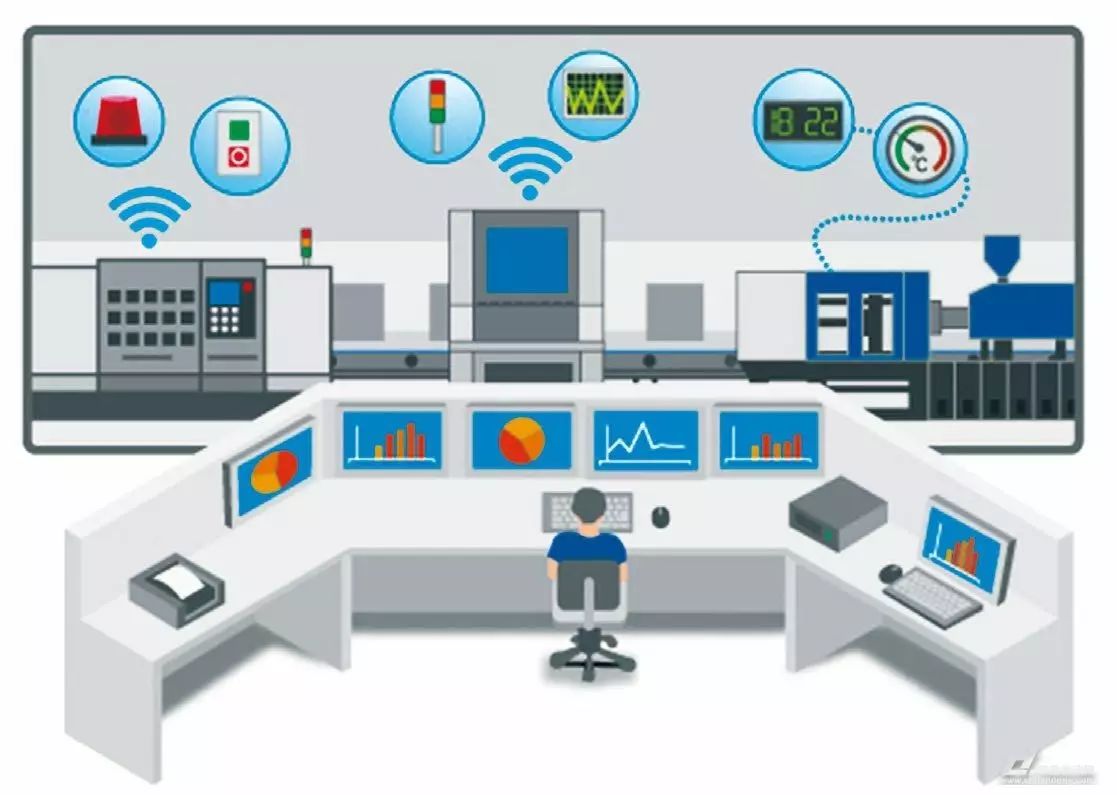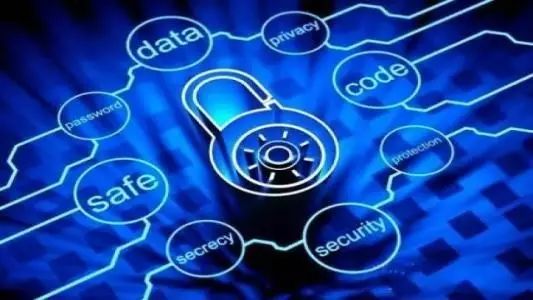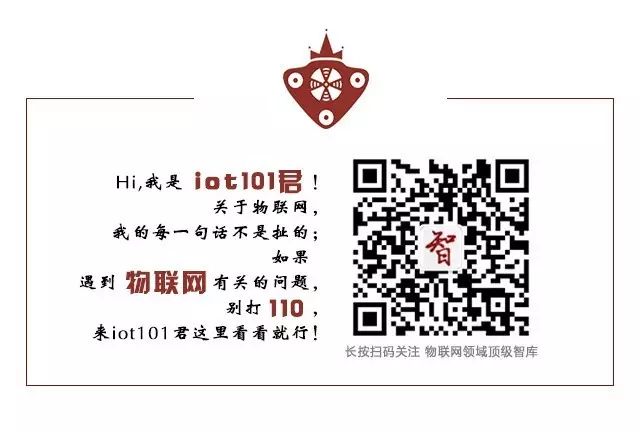
Source:www.redlion.net
IoT Think Tank Organized and Published
Please indicate the source when reprinting
—— [Introduction] ——
Industrial automation belongs to a broad technological framework and benefits greatly from industrial networking and mobile computing technologies. The combination of these technologies will help turn the concepts of “connected factories”, “Industry 4.0”, and Industrial Internet of Things (IIoT) into reality. However, the implementation of these concepts can lead to a series of confusions, making it feel like there is no way to start the relevant implementation work. This article introduces these concepts, lists the key factors that organizations should consider when formulating an effective implementation strategy, and discusses the operational advantages brought by connectivity, monitoring, and control operations.

In the past 20 years, science and technology have advanced rapidly. Among them, industrial networking and mobile computing continue to influence the manufacturing industry. These technologies help global manufacturers and organizations turn concepts such as “connected factories”, “Industry 4.0”, and Industrial Internet of Things (IIoT) into reality. However, what are the differences between these concepts? This white paper will first define these concepts and then explain the key elements that organizations need to consider when designing an effective implementation strategy, while also illustrating the advantages of achieving connectivity, monitoring, and control operations.
Concept Definitions
What is a Connected Factory?
A connected factory is a vision of a manufacturing environment where each machine can communicate with all other machines and devices both within the factory and remotely. The goal of the connected factory is to connect, monitor, and control any device from almost any location, enhancing operational productivity and profitability.
What is Industry 4.0?
According to Wikipedia, Industry 4.0 is “a collective term for technologies and concepts that are used in the organization of value chains”. This term first appeared in the German government’s high-tech strategy plan for the Fourth Industrial Revolution, based on the dynamic optimization of production resources within and between highly connected factories.
What is Industrial Internet of Things (IIoT)?
Similar to connected factories and Industry 4.0, IIoT means that organizations can connect multiple different devices, including legacy equipment, and allow them to “talk” to each other. By collecting, analyzing, and utilizing data from new and legacy devices, organizations can improve efficiency and gain a competitive advantage.
Designing an Effective Implementation Strategy

Today, many organizations are eager to implement the concepts of connected factories, Industry 4.0, and IIoT to achieve numerous benefits, such as reducing operational costs and achieving better visibility and control. However, for most organizations, building entirely new facilities or “starting over from scratch” is neither realistic nor cost-effective. Therefore, many solutions utilize existing equipment and cleverly deploy components to achieve extended monitoring and control without disrupting daily operations. It is important to set expectations early when upgrading facilities. Although every device in the network has an IP address, this does not mean that you can log into every panel meter, water pump, and variable frequency drive with a mobile device. To bring facilities into the 21st century, several core principles must be established to ensure a smooth transition and provide access to, monitoring, and control of information coming from various locations.
The first step in designing an effective implementation strategy is to gain a deep understanding of the organization’s operational environment and the devices, applications, and processes that make up that environment. Before taking action, organizations should consider the following five key factors:
1. Legacy Equipment
Connect existing inventory equipment. What is the age of these devices? Do they need to be updated? Can legacy equipment communicate with newer equipment? How much time and cost will this take? What cost-effective solutions can appropriately handle the existing infrastructure?
2. Protocols/Communication
What communication protocols are being used by devices in the network? How many are in use? Is it necessary to change communication protocols to enable devices to communicate with others in the environment? What type of transmission medium is used in your workplace? Is it fiber optic cable? Serial communication (RS-232/422/485)? Or copper ports?
3. Location/Environment
Where is your facility located? If your equipment is in a remote location, can it be monitored via cellular networks? Is your location accessible to 3G or 4G/LTE networks? If not, is broadband or fiber connection allowed? Additionally, what is the overall environment within the building? Is it hot and dusty, or is it a controlled temperature environment? Are there frequent vibrations? Do the industrial-grade devices you are using have environmental ratings and industrial certifications?
4. Security
A recent survey by Business Insider Intelligence showed that 39% of senior respondents believe privacy and security are the biggest barriers to IoT investment. Security is the most frequently mentioned concern among respondents. Although this survey covers all aspects of IoT, security is also a critical consideration for IIoT. How should sensitive data be protected when collected and transmitted? What security measures are in place for systems that collect, monitor, process, and store IIoT data? What regulations related to data protection and information security do you need to be aware of?
5. Employees
As more technically sophisticated devices are added to your network, do you have the right IT staff and other skilled employees to assist with installation and monitoring tasks in your factory? Is software or remote monitoring needed to monitor devices at other locations?
Once everything is in place, organizations should gradually implement the following three points:
-
Enable communication between devices
-
Ensure operational efficiency across the facility
-
Provide a secure platform for device communication
Enable Communication Between Devices

In some factories, drives, sensors, programmable logic controllers (PLC), panel meters, and other automation devices may have been in use for years, even decades. The challenge of achieving a connected factory lies in how to enable these devices to communicate using proprietary communication protocols with RS232 / 422 / 485 serial cables. Although these serial protocols are efficient, they were often developed for specific applications in the past. Many of these applications did not include the capability for 24/7 monitoring over TCP/IP networks. To integrate these devices into the framework of connected factories, Industry 4.0, and IIoT, the organization’s engineers must first ensure that the devices can communicate with other devices within the factory. Today, companies can choose advanced HMIs, protocol converters, and other automation products that support different protocols for on-site use to connect devices from different manufacturers. These solutions can provide seamless industrial transmission and multi-protocol support without concerning the physical medium during communication.
Ensure Operational Efficiency Across the Facility

There are various channels to achieve operational efficiency, one of which is to use data collected from monitoring points on the production line to minimize waste and downtime. As technology continues to improve, these status points will include more information from a broader range of sources. Managed Ethernet switches will be able to report data streams across the facility in the same way that sensors on the production line report product status. This practice of expanding the collection of operational data enables organizations to gain readily available data through visualization management solutions, allowing them to collect, record, and display important key performance indicators (KPI) and Andon information. Real-time display of this critical performance data helps improve productivity and increase output. This concept is not limited to connecting, communicating, and monitoring within the organization; it can also extend to the supply and distribution chain, providing a comprehensive view of overall operations.
Provide a Secure Platform for Device Communication

Routers are deployed in the network to limit specific types of network traffic or traffic transmitted to specific users, minimizing the risk of network attacks. Another technique is to implement NAT (Network Address Translation). NAT is a technique that conceals network devices from inbound access but does not affect traffic within the network. Finally, VPN devices ensure secure communication from factory to factory, supply chain to factory, or factory to distributor by creating a virtual “tunnel” for transmitting sensitive data.
Overall Implementation Advantages
The efficiency of connected factories, Industry 4.0, and/or IIoT models does not derive from the absolute number of connections but from the high-value connections and the competitive advantages generated by harmonious dialogue between devices and people. Seamless communication with operators, control systems, and software applications, combined with practical network options and support for local functionalities and protocols, provides extraordinary significance for extracting data from industrial devices. These capabilities elevate automation and remote management to new heights, making this vision a reality. Organizations adopt specially designed supporting components to intricately integrate all facilities into a unified network, achieving connectivity, monitoring, and control functions to gain the following advantages:
• Extend Equipment Lifespan: Enhance the value of existing equipment through powerful protocol conversion capabilities.
• Improve Process Transparency: Gain insights into equipment status and enhance productivity through data recording and communication capabilities.
• Expand Control Functions to the Network Edge: Extend system management with control functions at the device level, replacing traditional control methods in central control rooms.
These advantages not only significantly reduce total ownership costs and accelerate equipment deployment but also provide more stable end-to-end functionality for various applications.

Previous Hot Articles (Click the article title to read directly):
-
《Cognitive Computing, Blockchain IoT, IoT Security… Those Who Understand Will Control the Future》
-
《KUKA, ABB, Fanuc, Yaskawa, Four Industrial Robot Giants Have Long Been Stationed in the IoT Field》
-
《[Heavyweight] IoT Industry Panorama Report, The First Domestic IoT Industry Two-dimensional Perspective Panorama》
-
《A Cartoon Explains: Besides WiFi, Bluetooth, What Can the Recently Popular NB-IoT Do?》
-
《A Cartoon Explains: Behind NB-IoT, What Is the LoRa That Everyone Is Talking About?》
